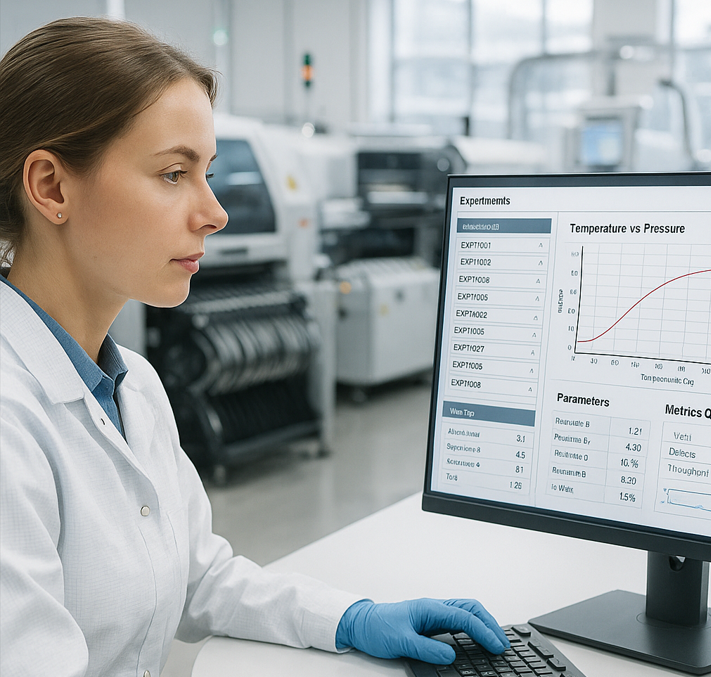
Last year, Anna, a senior process engineer at a high-end electronics manufacturer, faced abrutal deadline. A critical sintering trial had just wrapped. Her task: consolidate raw machine data, verify temperature and pressure logs, check unit consistency, and generate a clean report for the quality team and management—all before 5 PM.
She opened six spreadsheets, copy-pasted plots into slides, and manually updated formulas. An hour before the deadline, she spotted a mismatch in the pressure units—bars instead of pascals. Everything had to be redone. That night, she stayed late, frustrated, cleaning up files instead of learning from the experiment.
Two months later, her team piloted an AI-supported engineering notebook: AISEN.
For the first time, my data just flowed. No formatting. No formula errors. Just results.
Anna’s story is not unique. It’s the daily reality for thousands of engineers.
In modern manufacturing and development environments, engineers operate at the intersection of experimentation, data, and decisions. Yet the core tools many rely on—spreadsheets and slide decks—weren't built for this.
Engineers lose up to 25% of their week manually formatting data, tracking inputs, checking units, and preparing slides.
Multiply that across a 10-person team, and you're looking at 100+ hours per week spent on coordination instead of core engineering. Even worse, errors creep in. A misplaced decimal, a misaligned unit, or a copied formula can derail an entire development loop.
Just like Anna, engineers often work late not because they lack insight—but because their tools weren’t built to keep up.
High-frequency sensors. Multi-variable trials. Tight traceability requirements. Engineers now work in fast, data-rich environments that demand precision and speed.
Yet most still rely on general-purpose tools:
These workflows are fragile. Templates lack version control. Slide decks must be rebuilt from scratch. Files are emailed back and forth. Time is lost, and knowledge slips through the cracks.
In her old workflow:
After switching to AISEN
Her teamcut their trial-to-reporting time from 2.5 hours to 15 minutes.
AISEN stands for AI-Supported Engineering Notebook. It’s not just another tool—it’s a structured environment built for how engineers actually work:
AISEN doesn’t just help me document. It helps me see the process more clearly.

Anna didn’t become a better engineer overnight. But by switching tools, she got back to engineering.
AISEN gives teams a structured, insight-ready environment. It eliminates guesswork, accelerates decisions, and protects knowledge. Instead of fighting files, engineers focus on improving outcomes.
Engineering isn’t about spreadsheets. It’s about learning, clarity, and results. AISEN helps teams deliver all three.